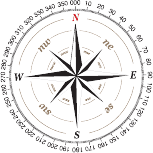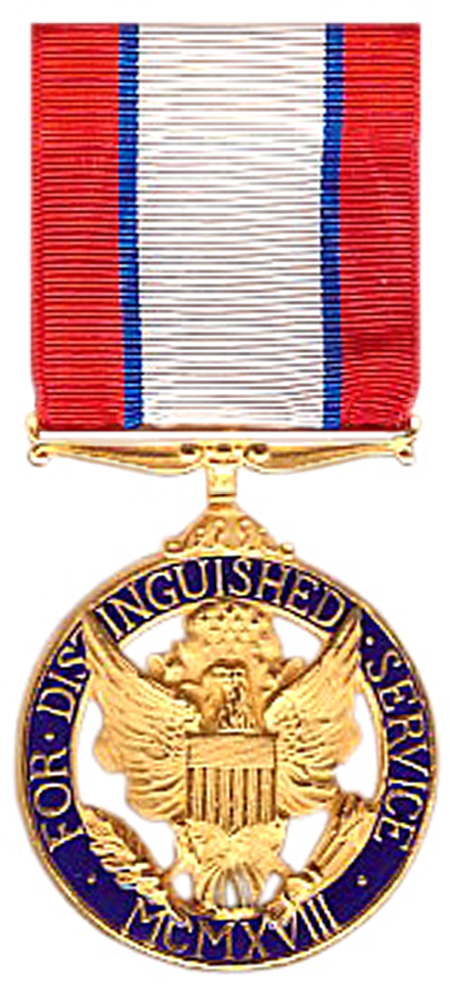Yarborough, William Pelam, born 12-05-1912 in Seattle, Washington,  the son of Colonel Leroy W. Yarborough and Addessia Yarborough. He attended high school at San Rafael Military Academy in California
the son of Colonel Leroy W. Yarborough and Addessia Yarborough. He attended high school at San Rafael Military Academy in California  and later at Columbus, Georgia. In 1931, Yarborough enlisted in the U.S. Army, obtaining an appointment to the U.S. Military Academy a year later in 1932. At his graduation from West Point in June 1936 Yarborough was sworn in as a second lieutenant by General of the Armies John Joseph Pershing.
and later at Columbus, Georgia. In 1931, Yarborough enlisted in the U.S. Army, obtaining an appointment to the U.S. Military Academy a year later in 1932. At his graduation from West Point in June 1936 Yarborough was sworn in as a second lieutenant by General of the Armies John Joseph Pershing.
 the son of Colonel Leroy W. Yarborough and Addessia Yarborough. He attended high school at San Rafael Military Academy in California
the son of Colonel Leroy W. Yarborough and Addessia Yarborough. He attended high school at San Rafael Military Academy in California  and later at Columbus, Georgia. In 1931, Yarborough enlisted in the U.S. Army, obtaining an appointment to the U.S. Military Academy a year later in 1932. At his graduation from West Point in June 1936 Yarborough was sworn in as a second lieutenant by General of the Armies John Joseph Pershing.
and later at Columbus, Georgia. In 1931, Yarborough enlisted in the U.S. Army, obtaining an appointment to the U.S. Military Academy a year later in 1932. At his graduation from West Point in June 1936 Yarborough was sworn in as a second lieutenant by General of the Armies John Joseph Pershing.
 He was assigned to the 57th Infantry, Philippine Scouts at Fort McKinley, Luzon where he remained until February 1940, when he was transferred to the 29th Infantry Regiment at Fort Benning, Georgia. He joined the newly formed 501st Parachute Battalion, nickname “Geronimo”
He was assigned to the 57th Infantry, Philippine Scouts at Fort McKinley, Luzon where he remained until February 1940, when he was transferred to the 29th Infantry Regiment at Fort Benning, Georgia. He joined the newly formed 501st Parachute Battalion, nickname “Geronimo”  in late 1940 and was given command of Company “C”.
in late 1940 and was given command of Company “C”.  Later, as Test Officer for the Provisional Parachute Group in 1941, he designed the paratrooper’s boot, the paratrooper’s uniform,
Later, as Test Officer for the Provisional Parachute Group in 1941, he designed the paratrooper’s boot, the paratrooper’s uniform,  the parachutist’s qualification badge,
the parachutist’s qualification badge,  and a number of aerial delivery containers for which he received U. S. patents. Yarborough first met his future wife, Norma Tuttle Yarborough (1918–1999), when she was 12 and he was 18. At the time, they were neighbors when their fathers were stationed at Fort Benning. They became reacquainted when the two families were next door neighbors at Plattsburgh Barracks in New York. In 1936 she was crowned “Miss Topeka. In July 1942, Major Yarborough was selected by General Mark “Contraband” Clark
and a number of aerial delivery containers for which he received U. S. patents. Yarborough first met his future wife, Norma Tuttle Yarborough (1918–1999), when she was 12 and he was 18. At the time, they were neighbors when their fathers were stationed at Fort Benning. They became reacquainted when the two families were next door neighbors at Plattsburgh Barracks in New York. In 1936 she was crowned “Miss Topeka. In July 1942, Major Yarborough was selected by General Mark “Contraband” Clark  to be his Airborne Advisor and in that capacity accompanied General Clark to England. As a working member of the London Planning Group, he developed the initial concept and plan for the airborne phase of the North African Invasion. When the Paratroop Task Force departed Land’s End, England on 07-11-1942, Yarborough as executive officer accompanied it on its flight over Spain toward its target objectives in Algeria. This was the longest operational flight ever made by parachute troops. In the course of the ensuing action the airplane in which he was flying was shot down by Vichy French (see Phillipe Petain)
to be his Airborne Advisor and in that capacity accompanied General Clark to England. As a working member of the London Planning Group, he developed the initial concept and plan for the airborne phase of the North African Invasion. When the Paratroop Task Force departed Land’s End, England on 07-11-1942, Yarborough as executive officer accompanied it on its flight over Spain toward its target objectives in Algeria. This was the longest operational flight ever made by parachute troops. In the course of the ensuing action the airplane in which he was flying was shot down by Vichy French (see Phillipe Petain)  fighter aircraft over the Sebkra d’Oran. He participated in combat operations to capture Tafaroui Airdrome in Algeria. A week later, Yarborough parachuted into Youks les Bains Airfield near Tebessa, Algeria, near the Tunisian border and fighting as part of a combined French and U.S. Paratroop Task Force in Tunisia until January 1943, when he returned to the United States. In March 1943, Yarborough returned to North Africa as Commander of the 2nd Battalion, 504th Parachute Infantry Regiment
fighter aircraft over the Sebkra d’Oran. He participated in combat operations to capture Tafaroui Airdrome in Algeria. A week later, Yarborough parachuted into Youks les Bains Airfield near Tebessa, Algeria, near the Tunisian border and fighting as part of a combined French and U.S. Paratroop Task Force in Tunisia until January 1943, when he returned to the United States. In March 1943, Yarborough returned to North Africa as Commander of the 2nd Battalion, 504th Parachute Infantry Regiment , later under James “Slim Jim” Gavin
, later under James “Slim Jim” Gavin
 and led his unit through the Sicilian Invasion. He was promoted to Lieutenant Colonel in May. Following a disastrous battle at Tumminello Pass, Yarborough was relieved of his command by Major General Matthew Ridgway.
and led his unit through the Sicilian Invasion. He was promoted to Lieutenant Colonel in May. Following a disastrous battle at Tumminello Pass, Yarborough was relieved of his command by Major General Matthew Ridgway.  General Clark then had him assigned to his staff. During Operation Avalance Yarborough served as the airborne officer of G-3, Fifth Army
General Clark then had him assigned to his staff. During Operation Avalance Yarborough served as the airborne officer of G-3, Fifth Army
 and organized the night drop zone to receive the latest elements of the 82nd which had flown from Sicily to relieve the beleaguered beachhead. Just prior to the fall of Naples, Yarborough was given command of the 509th Parachute Battalion.
and organized the night drop zone to receive the latest elements of the 82nd which had flown from Sicily to relieve the beleaguered beachhead. Just prior to the fall of Naples, Yarborough was given command of the 509th Parachute Battalion.  His unit, as part of Darby’s Ranger Forces, William “Bill” Darby
His unit, as part of Darby’s Ranger Forces, William “Bill” Darby 
 made the initial landings at Anzio-Nettuno and held a key position on the beachhead for two months. Later under his command the 509th and two attached parachute battalions spearheaded the landings in southern France, landing on a mountaintop near Le Muy before dawn. Cannes, Nice and Monte Carlo, along the Cote d’Azur fell to the parachutists who then turned northward into the Maritime Alps to protect the right flank of the US Seventh Army, as it moved north. Yarborough returned briefly to the United States to attend the 21stcourse of the Command and General Staff College, Fort Leavenworth,
made the initial landings at Anzio-Nettuno and held a key position on the beachhead for two months. Later under his command the 509th and two attached parachute battalions spearheaded the landings in southern France, landing on a mountaintop near Le Muy before dawn. Cannes, Nice and Monte Carlo, along the Cote d’Azur fell to the parachutists who then turned northward into the Maritime Alps to protect the right flank of the US Seventh Army, as it moved north. Yarborough returned briefly to the United States to attend the 21stcourse of the Command and General Staff College, Fort Leavenworth,  Kansas. He returned to Europe in January 1945 as commander of the 473rd Infantry Regimental Combat Team, which fought its way up the Ligurian Coast to Genoa and the French border as World War II came to an end. It was during this campaign that he was awarded the Silver Star
Kansas. He returned to Europe in January 1945 as commander of the 473rd Infantry Regimental Combat Team, which fought its way up the Ligurian Coast to Genoa and the French border as World War II came to an end. It was during this campaign that he was awarded the Silver Star  and later of the U.S. Forces in Austria and the Vienna Area Command. In the latter position he organized the famous Four Power International Patrol of Russian, French, British, and American military police. He served in Colombia and Asia, he retired from the Army in 1971. General Yarborough was married to his wife Norma for over 60 years. They had three children: 2 girls, Norma Kay and one boy, LuietenantTG (Ret.) William Lee Yarborough, US Army. Mrs. Norma Yarborough died in 1999. Shortly before his death, Yarborough was honored on 30-09-2005 with the donation of a bust in his honor at the Airborne and Special Operations Museum in Fayetteville, North Carolina. In 2012, he and President John F. Kennedy
and later of the U.S. Forces in Austria and the Vienna Area Command. In the latter position he organized the famous Four Power International Patrol of Russian, French, British, and American military police. He served in Colombia and Asia, he retired from the Army in 1971. General Yarborough was married to his wife Norma for over 60 years. They had three children: 2 girls, Norma Kay and one boy, LuietenantTG (Ret.) William Lee Yarborough, US Army. Mrs. Norma Yarborough died in 1999. Shortly before his death, Yarborough was honored on 30-09-2005 with the donation of a bust in his honor at the Airborne and Special Operations Museum in Fayetteville, North Carolina. In 2012, he and President John F. Kennedy

 were memorialized by a new statue at the U.S. Army John F. Kennedy Special Warfare Center and School at Fort Bragg.
were memorialized by a new statue at the U.S. Army John F. Kennedy Special Warfare Center and School at Fort Bragg.Death and burial ground of Yarborough, William Pelam.



Yarborough succumbed to complications following a broken hip on 06-12-2002. He is buried with his wife Norma Mae, who died age 81, on 24-07-1999, on the Arlington National Cemetery, Section 4.













 under Infantery General and Commander of the 3rd Infantry Division, Anzio,
under Infantery General and Commander of the 3rd Infantry Division, Anzio, 








Leave a Reply